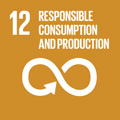- Docente: Angelo Casagrande
- Credits: 8
- SSD: ING-IND/21
- Language: Italian
- Teaching Mode: Traditional lectures
- Campus: Ravenna
- Corso: First cycle degree programme (L) in Chemistry and Technologies for the Environment and Materials (cod. 8515)
Learning outcomes
To understand the metallurgical principles governing any particular process starting from the aspects of plastic deformation, the variability in mechanical properties, the operating behaviors up to the fracture mechanisms at high and low temperature in alloy steels and non ferrous metals
Course contents
DEFORMATION MECHANISMS IN METAL
Elastic and plastic behavior, deformation of single crystals
Deformation by slip, slip in perfect lattice and slip by dislocations movement;
Critical resolved shear stress for slip;
Deformation by twinning;
Dislocations in FCC, in BCC and Hexagonal close packed Lattice;
Stacking faults, deformation bands and Strain Hardenings of single crystals;
Forces between dislocations, dislocation climb, interaction of dislocations and Jogs;
Dislocations sources, moltiplications of dislocations, dislocations Pile-up;
Dislocation reactions and sessile dislocations;
Interactions with point defects;
Deformation of polycrystalls;
Bauschingher effect;
Internal friction in metals and mechanisms;
STRENGTHENING MECHANISMS
Introduction
Strengthening from grain boundaries;
Yield-Point Phenomenon;
Strain Aging;
Solid solution strengthening;
Deformation of Two–Phase Aggregates;
Strengthening from fine particles;
Strengthening Due to Point Defects;
Martensite Strengthening;
Cold worked structure;
Strain hardening;
Annealing of cold worked metal;
Preffered orientation (texture);
RECRYSTALLIZATION
Related annealing phenomena
Deformation rate and crystallization temperature
FRACTURE
Fracture mechanisms: Cleavage, Ductile fracture
Environment assisted fracture
Intergranular fracture
Fatigue fracture
Crack growth criteria: Griffth, Irwin-Orwan
Relation between energy release rate and stress intensity factor (KIc)
FATIGUE
Definitions and date presentation
Effect of mean stress
Effect of material variables
Fatigue mechanisms
Thermal fatigue
Fatigue crack propagation
Corrosion fatigue and stress corrosion cracking
Life prediction
Limitis to fatigue failures
CREEP AND STRESS RUPTURE
The high-temperature materials problem
Time dependent mechanical behavior
The creep curve
Mechanisms of creep deformation
Fracture at elevated temperature
Alloys for High-Temperatures
APPLICATIONS TO MATERIALS TESTING
The tension test, true strain curve
The hardness test
Stress intensity factor
Toughness testing-toughness of materials
Notched-bar impact tests, charpy test
Significance of transition-temperature curve
Metallurgical factors affecting transition-temperature
Temper embrittlement
ALLOY STEELS DESIGNATION
Low alloy constructional steels by general use
Constructional special alloy steels
Alloy tool steels
Stainless steels
Heat-resisting steels and low temperature resisting steels
CAST IRONS
Structure and properties of cast irons NON_FERROUS METALS AND ALLOYS
COPPER and its alloys
Bronzes and Brasses
ALUMINIUM and its alloys
Wrougth aluminium alloys
Cast aluminium alloys
TITANIUM and its alloys
MAGNESIUM and its alloys
Laboratory program:
Recrystallization.: deformation rate and recrystallization temperature (DTA) with optical microscope observations;
Construction of fracture mechanisms by scanning electron microscope;
Analyses with EDS (Energy dispersive spectroscopy) in metals, alloys composites and ceramics;
Surface modification of steels: Diffusion mechanisms; Carburizing, properties and structure, microhardness misures profile;
Temper embrittlement;
TGA and DTA on aluminium alloys
Construction of spectra by charpy tests- resilience of alloy steels
Tribology and its significance: friction and wear-pin on disk;
Elastic modulus significance: misures on metals, alloys, composites and ceramic materials
Metallographic observations on Stainless Steels: Corrosion forms by sensitizing range
Dilatometric measures on metal and ceramics
Readings/Bibliography
Metallurgia (Paulucci) Vol. 1-2-3
Metallurgia (Cigada -G.Re) vol. 2
Metallurgia (D. Sinigalia ) vol 1
Teaching methods
lessons in class and set of university lectures
laboratory exercise with optical and electronic microscope, indenter for hardness measures, DSC and elastic modulus instrument
Assessment methods
The final exam, oral type, relating to contents of 8 CFU, is an assessment of the achievement of learning objectives:
-know the extractive metallurgy and problems relating to principal alloys, ferrous and non;
-know the exercise behavior of the major alloys and related iusses;
-criteria for the choise of laboratory techniques for the investigation of metallurgical problems.
Teaching tools
Blackboard, videoprojector, PC
Office hours
See the website of Angelo Casagrande
SDGs


This teaching activity contributes to the achievement of the Sustainable Development Goals of the UN 2030 Agenda.
